Some voices rise above the noise.
These are the thought leaders—people who shape conversations, influence decisions, and drive entire industries forward.
Thought leadership means sharing insights, perspectives, and expertise that help others understand complex topics better. You consistently contribute valuable ideas to industry conversations, backed by real experience and authentic knowledge.
The impact goes far beyond brand awareness. Companies with strong thought leadership see measurable business results: higher conversion rates, better talent acquisition, stronger investor interest, and partnerships that wouldn't exist otherwise.
In this guide, we’ll show you how to build thought leadership that’s not only authentic, but also drives real business growth.
Why Thought Leadership Matters
Builds Industry Presence and Brand Recognition
Companies that consistently share useful insights become the ones people turn to. When journalists look for expert commentary, when conference organizers search for speakers, and when prospects evaluate solutions, recognized thought leaders come to mind first.
This visibility compounds over time. Every article, speaking engagement, and media mention reinforces your position as a trusted voice in the industry.
Take Buffer, for example. They built their brand by being radically transparent—sharing open salary data, remote work culture experiments, and honest lessons from running a distributed team. Long before remote work went mainstream, they had already earned a seat at the table.
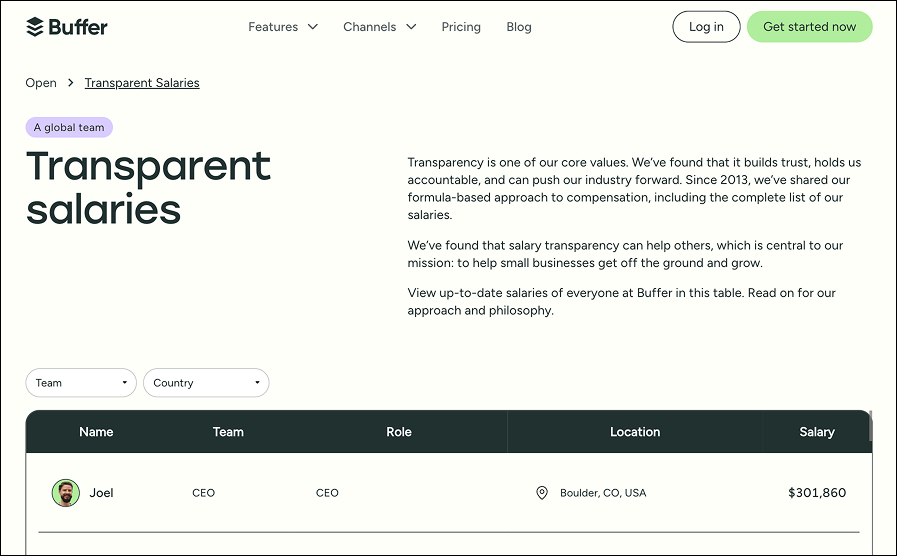
Establishes Deep Credibility and Trust
Trust takes time to build but can accelerate business relationships dramatically. When prospects already know and respect your thinking, sales cycles shorten.
According to Edelman's research, 60% of decision-makers said thought leadership directly influenced their purchasing decisions for products they hadn't previously considered.
That's the power of pre-established credibility. Your ideas do the selling before your sales team ever makes contact.
Attracts High-Quality Opportunities
Strong thought leadership works like a magnet for the right people and partnerships.
Top talent wants to work with companies they respect intellectually. Investors look for leaders who understand their markets deeply. Strategic partners seek out organizations that can contribute meaningful insights to joint ventures.
Shopify's consistent commentary on e-commerce trends, small business challenges, and digital commerce evolution has attracted partnerships with major platforms like Facebook, Google, and TikTok. Their thought leadership opened doors that pure product capabilities alone couldn't.
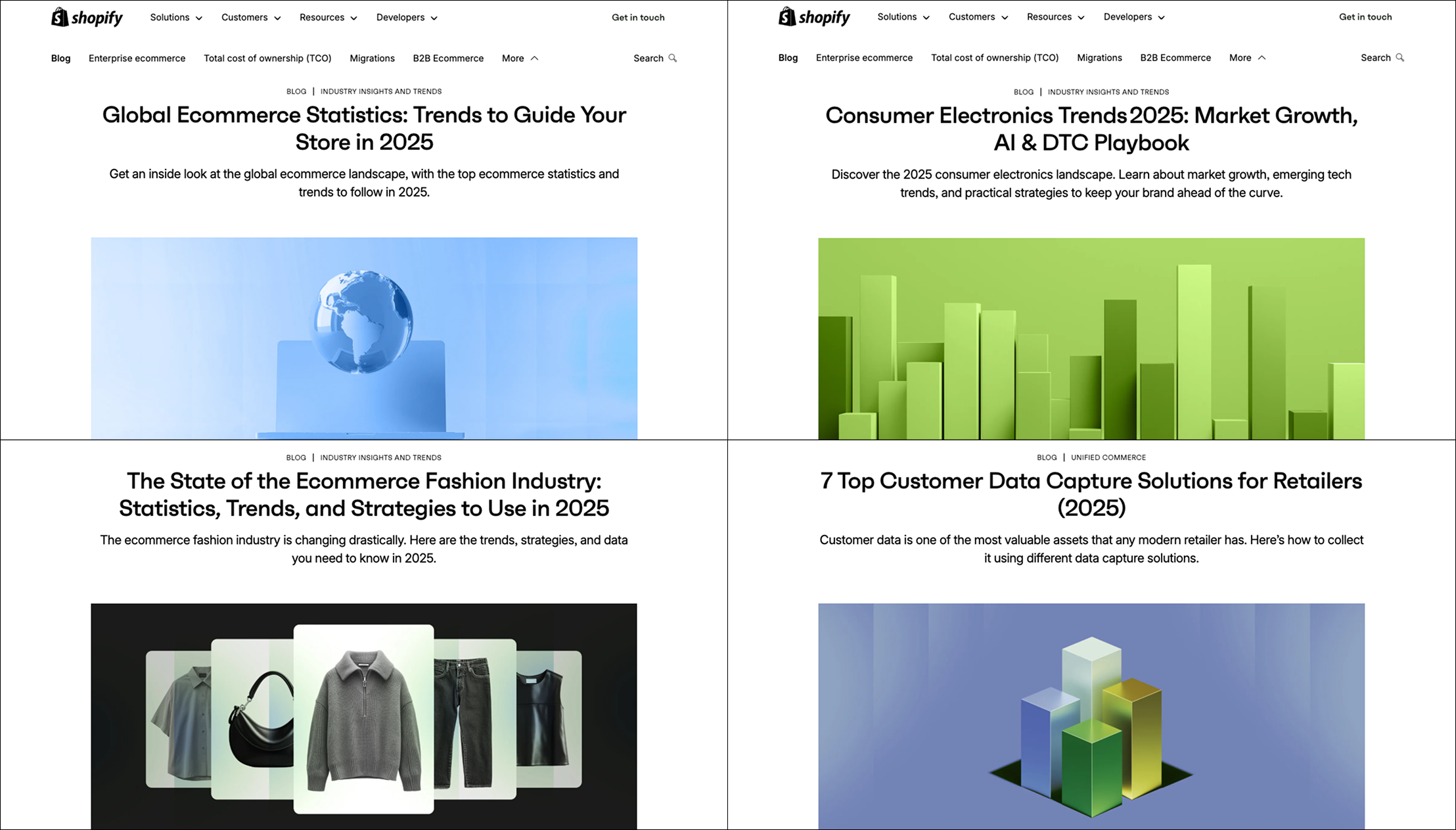
Drives Measurable Business Growth
The numbers tell the story clearly:
- 55% of B2B buyers use thought leadership as part of their vetting process
- 60% of C-suite executives rely on thought leadership to inform business decisions
- 47% of readers share their contact information after consuming thought leadership content
These aren't vanity metrics. They represent real pipeline activity and revenue opportunities.
Sparks Innovation and Forward Thinking
Great thought leadership doesn't just reflect current thinking; it shapes future direction.
When you consistently analyze trends, challenge assumptions, and propose new approaches, you influence how entire industries evolve. You become part of the conversation that defines what's next.
Whitney Wolfe Herd, founder of Bumble, did just that by flipping dating app dynamics—putting women in control and sparking broader conversations about respect and safety online. Her vision expanded into friendship and networking, redefining how people connect in the digital age.
Creates a Distinctive Voice
In crowded markets, your perspective becomes a differentiator.
While competitors race to match features, no one can copy your lived experience or the clarity of your insights. Your voice becomes part of your value proposition.
Key Characteristics of Effective Thought Leaders
Share Genuinely Insightful Ideas
True thought leaders help others see what’s coming next. They connect dots others overlook and share interpretations that change how people think.
Mary Meeker’s Internet Trends Report was more than just data—it was analysis that shaped how entire sectors prepared for digital shifts. When she returned in 2025 with a new report focused on AI, her perspective once again set the tone for where the conversation was headed.
Lead Through Influence, Not Authority
True thought leadership comes from the ability to inspire and influence others through the power of ideas, not organizational authority.
It requires courage to express contrarian views and the track record to back up bold predictions with results.
These leaders shape conversations not because of their job titles, but because their insights consistently prove valuable and accurate.
Demonstrate Authentic Curiosity
The best insights come from deep curiosity. Thought leaders ask better questions, look beyond surface-level metrics, and seek to understand the why behind the what.
Reid Hoffman’s Masters of Scale podcast goes beneath success stories to uncover the unusual principles that drive sustainable growth.
Express Confident, Convincing Convictions
While remaining open to new information, thought leaders take clear positions on important issues.
They articulate their viewpoints with confidence while backing them up with experience, data, or logical reasoning that helps others understand their perspective.
The Role of Thought Leadership in Content Marketing
A Focused Subset of Content Strategy
Thought leadership operates within the broader content marketing ecosystem, but it serves a specific function.
While marketing content often educates, supports products, or drives conversions, thought leadership focuses on sharing smart, original thinking that builds trust and authority.
Nurtures Prospects Before They’re Ready to Buy
Most thought leadership works at the top of the funnel—creating awareness and building credibility.
It ensures you’re already seen as a trusted voice by the time prospects enter the buying stage. It’s a long-term game with high long-term payoff.
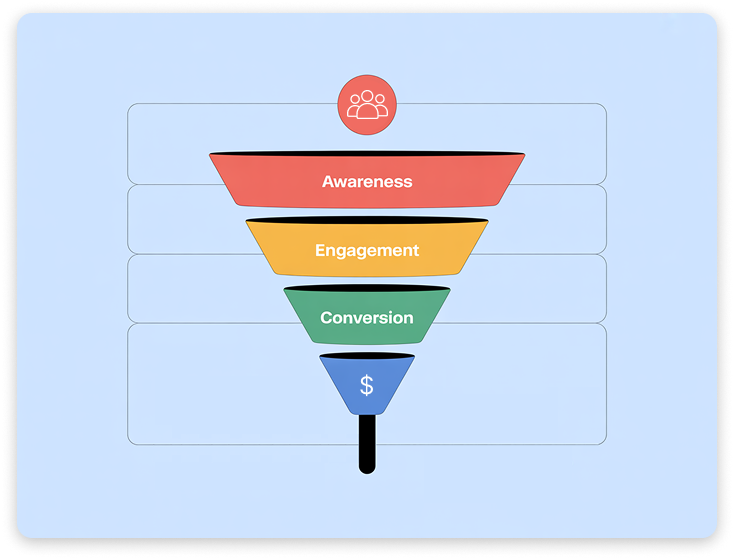
Thrives in an Integrated Content Mix
Thought leadership works best alongside:
- Educational content (how-to guides, tutorials)
- Product content (features, case studies)
- Customer stories (real-world wins)
- Top-of-funnel influence content (thought leadership)
Quality matters more than quantity. One profound insight shared thoughtfully will outperform ten surface-level posts every time.
What Makes Thought Leadership Content Effective
It Takes a Stand
The most impactful thought leadership content expresses unique opinions that challenge conventional thinking.
It doesn't just summarize existing knowledge—it proposes new ways of looking at familiar problems or opportunities.
Basecamp's strong stance against venture capital and rapid growth at all costs sparked industry-wide discussions about sustainable business models and work-life balance.
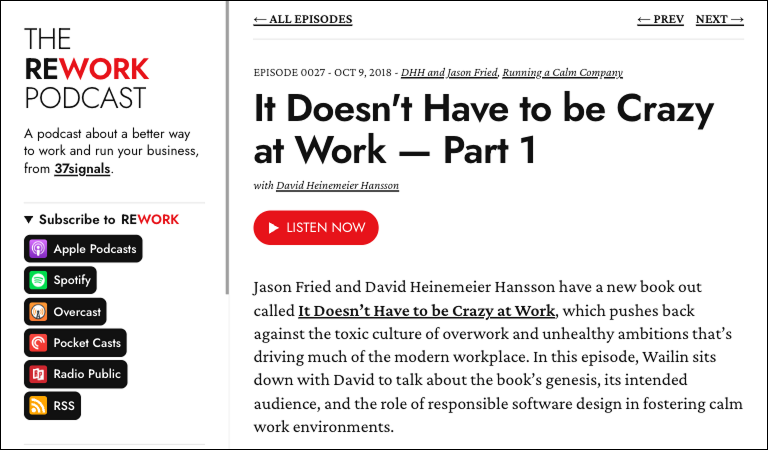
It Prioritizes the Audience, Not the Brand
Effective thought leadership empowers readers emotionally and intellectually. It helps them see their challenges differently or gives them new tools for solving problems.
The focus stays on genuine value, not brand promotion. Self-serving content dressed up as thought leadership quickly loses credibility.
It Delivers Independent Value
The best thought leadership content stands alone as valuable information, regardless of who created it.
It informs, educates, and sometimes entertains—but always with substance that readers can apply immediately.
It Offers Fresh Insights
The best ideas make readers pause and think: “I hadn’t considered that before.”
They go beyond news recaps or echoing trends, offering original analysis and unexpected connections.
It’s Backed by Real-World Experience or Data
Strong content backs up opinions with either firsthand experience or solid data—preferably both.
Personal stories from building companies, managing teams, or working with customers carry more weight than theoretical frameworks.
Proprietary data and original research add credibility that competitors can't easily match.
For instance, Intercom shares product decisions, failures, and lessons learned from building their SaaS business. Posts like “Why we killed the blog” walk readers through their internal thinking, offering transparent, experience-based reasoning others can learn from.
It Solves Real Problems
The most engaging pieces tackles problems that keep your audience up at night.
They recognize nuance, offer clarity, and provide practical ways to approach hard problems.
Types of Thought Leadership Content
Different content formats serve different purposes in thought leadership strategies.
- Counter-Narrative Opinions challenge widely accepted beliefs in your industry. These pieces generate discussion and help establish your unique perspective.
- Personal Narratives share stories and case studies from your direct experience. They make abstract concepts concrete and help readers understand how ideas apply in practice.
- Industry Analysis examines trends, disruptors, and emerging patterns. This content helps audiences understand where their industry is heading and how to prepare.
- Data Storytelling uses proprietary data to reveal insights others can't access. Original research creates unique value and establishes your organization as a primary source.
- Licensed Content involves partnering with industry experts or publications to fill gaps in your content calendar while maintaining credibility.
- White Papers and Ebooks provide in-depth analysis of complex topics. These longer formats allow for comprehensive exploration of multifaceted issues.
- Webinars and Podcasts enable real-time interaction with your audience and allow for more conversational exploration of ideas.
- Speaking Engagements position your experts as authorities while providing content that can be repurposed across multiple channels.
- Videos, Blog Posts, and Infographics make complex ideas accessible and shareable across different platforms and audience preferences.
For strategies specifically focused on earning media coverage and building relationships with journalists, our guide on thought leadership in PR shows how expert positioning drives press mentions and media opportunities.
Strategic Planning for Thought Leadership
Step 1: Start with Clear Business Goals and Audience Research
Define what you want to achieve through thought leadership.
Do you want to become the go-to voice for a specific topic? Increase trust with potential customers? Attract top talent or strategic partners?
Identify your target audience specifically: What are their roles, interests, and biggest challenges? What type of content do they consume and where?
Analyze their social media activity, trending content in your industry, and feedback from customer-facing teams to understand what resonates.
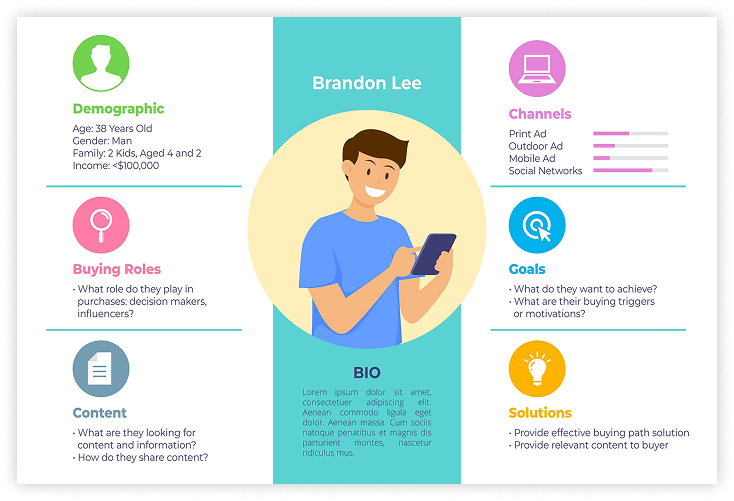
Step 2: Generate Strong, Experience-Backed Ideas
Focus on original ideas and unique perspectives that come from your firsthand experience.
Ask yourself:
- What have you seen or built that others haven't?
- What lessons have you learned from failures that could help others?
- What's commonly accepted in your industry that you believe is wrong?
- What patterns do you notice that others might miss?
The strongest thought leadership content comes from genuine expertise, not just research and opinion.
Step 3: Identify the Right Thought Leaders
Choose people within your organization who have:
- Deep, firsthand experience in relevant areas
- Genuine expertise others can learn from
- The ability to communicate complex ideas clearly
This might be your CEO, but it could also be your product manager, customer success lead, or technical founder—anyone who has built things, tested ideas, or worked closely with your target audience.
Step 4: Choose Appropriate Formats and Channels
Match content formats to your message and timeline. Quick, timely insights work well as LinkedIn posts. In-depth analysis fits better in articles, videos, or podcast episodes.
Start where your audience already spends time, then expand to other channels as you build momentum.
Step 5: Plan Your Content Calendar
Create a clear plan for consistent content production. Develop a simple calendar or backlog that outlines topics, themes, responsibilities, approval processes, frequency, and distribution channels.
Step 6: Create High-Impact Content
Structure your thought leadership content with:
- Clear key takeaway readers should remember
- Authentic tone that reflects your brand personality
- Strong hook that draws readers in immediately
- Logical flow that builds your argument step by step
- Supporting visuals that enhance understanding
- Clear call-to-action for further engagement
Use AI writing tools and team collaboration to streamline creation, but ensure the final content reflects genuine human insight and experience.
Step 7: Repurpose Content Strategically
Transform strong ideas into content for multiple channels. A single insight might become a podcast episode, LinkedIn carousel, blog post, and YouTube video—each adapted for its specific platform and audience.
See how this brand repurposed a single campaign across multiple formats to expand reach and impact.
Step 8: Measure Real Impact
Focus on engagement metrics that indicate genuine influence:
- Direct messages and connection requests from target prospects
- Shares and saves from high-value accounts
- Speaking invitations and media requests
- Partnership inquiries and business development conversations
Track traffic and conversions using UTM links, but remember that thought leadership often influences decisions that happen offline.
Monitor overall visibility through share of voice analysis, media mentions, and branded search volume increases.
Common Challenges with Thought Leadership
Breaking Through Industry Noise
Thought leadership can feel like an elusive goal when everyone claims to be a thought leader.
The solution isn't louder promotion—it's better insights. Focus on depth over breadth, and authenticity over perfection.
Resource and Expertise Constraints
Developing truly insightful content requires significant time and expertise that many companies lack internally.
Consider starting small with one clear area of expertise rather than trying to cover every industry topic immediately.
Balancing Risk and Reward
Meaningful thought leadership requires taking positions that not everyone will agree with.
Risk-averse brands often struggle with this, preferring safe, generic content that won't generate controversy—or engagement.
Limited Perspective and Focus
Companies sometimes develop tunnel vision, focusing so narrowly on their own experience that they miss broader industry context.
Regular engagement with customers, partners, and industry peers helps maintain perspective and relevance.
Handling Criticism
Taking strong positions inevitably attracts disagreement and criticism.Prepare to defend your ideas with evidence and remain open to evolving your thinking when presented with new information.
When and How to Outsource Thought Leadership
Project-Based Expert Partnerships
Hire recognized thought leaders for specific content projects like webinar series, research reports, or conference presentations.
This approach gives you access to established expertise while building your internal capabilities.
Licensed Content and Research
Partner with industry publications or research firms to create authoritative content that fills gaps in your expertise.
Licensed content can establish credibility in adjacent areas while you develop internal thought leadership capabilities.
Content Creation Support
Work with specialized agencies or freelancers who understand your industry and can help translate your expertise into compelling content.
The key is ensuring external partners capture your authentic voice and genuine insights rather than generic industry commentary.
Wrapping It Up
Thought leadership focuses on becoming trusted rather than famous.
When you consistently share valuable insights backed by real experience, you build the kind of authority that opens doors, shortens sales cycles, and creates opportunities money can't buy.
The process takes time and genuine commitment. But for companies willing to invest in building intellectual authority, the compound returns make it one of the most powerful long-term marketing strategies available.
Ready to amplify your thought leadership efforts?
Distribute your insights through MarketersMEDIA Newswire to reach high-authority outlets like AP News, Benzinga, StreetInsider, and Business Insider.
With guaranteed pickup across 570+ global media partners in over 160 countries, and a total potential reach of 5.9 billion, it's a proven way to get your expertise in front of decision-makers who value substance.
Frequently Asked Questions (FAQ)
Q: How does thought leadership help a company "steal" customers from competitors?
A: Thought leadership acts as a powerful competitive tool because 70% of C-suite executives report that it has prompted them to reconsider their current vendor relationship. More than half (54%) realized other vendors might better understand their needs, allowing a thought leader to disrupt incumbent relationships and potentially "steal" customers.
Q: What kind of ROI can we expect from thought leadership?
A: Fortune 100 executives estimate effective thought leadership programs deliver approximately $3.6 million annually, representing a 14x return on investment. The impact shows up through shortened sales cycles, higher conversion rates for deals that were previously not being considered, and the ability to influence 60% of decision-makers' purchasing decisions before your sales team ever makes contact.
Q: Which department should own thought leadership—Marketing, PR, or Strategy?
A: There's no single right answer, as it depends on your organization's goals and structure. However, thought leadership works best when it has executive-level support and crosses departmental boundaries. It requires collaboration between Marketing (for distribution), PR (for media relationships), and Strategy (for industry insights), with clear ownership to ensure consistent execution and accountability.
Q: How do we balance individual executive thought leadership with organizational brand thought leadership?
A: Individual thought leadership from executives and subject matter experts builds personal credibility and authentic voice, while organizational thought leadership establishes your company's position on industry issues.
The two complement each other: individual voices humanize your brand and attract attention, while organizational positioning provides scalable, sustainable authority. The key is ensuring individual perspectives align with and reinforce your company's strategic narrative.
Q: Should we build thought leadership content in-house or outsource it?
A: The best approach often combines both. Keep insight generation and strategic direction in-house to maintain authenticity and leverage your unique expertise. However, consider outsourcing content production, especially when internal experts lack time or writing skills.
Use specialized writers or agencies to extract and structure insights from your subject matter experts through interviews, then translate that knowledge into compelling content while preserving your authentic voice.
Free Press Release Template
Tell us where to send your PDF:
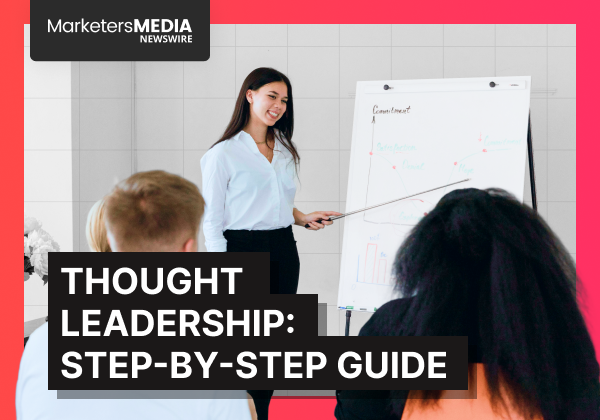







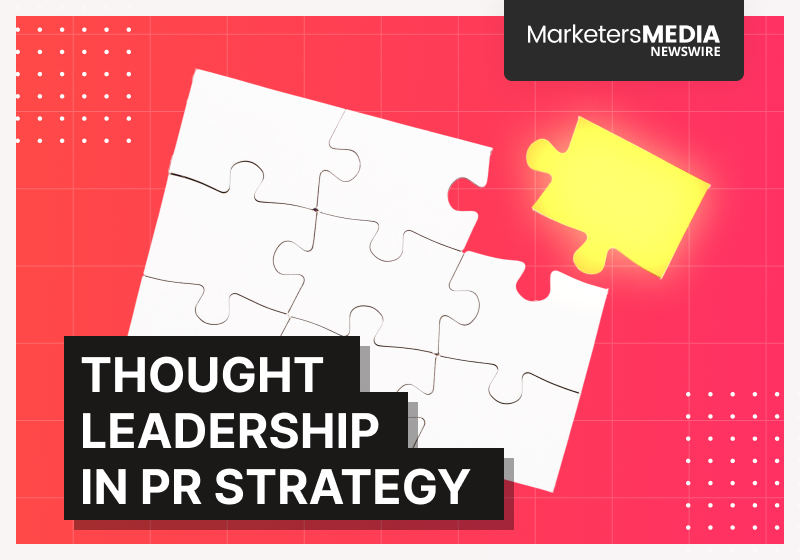

![10 Free Press Release Templates [Plus a Step-by-Step Guide]](https://marketersmedia.com/wp-content/uploads/2024/08/10-Free-Press-Release-Templates-Plus-a-Step-by-Step-Guide.png)